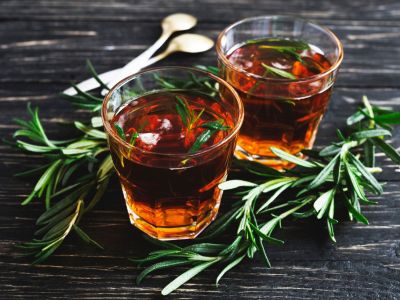Growing Herbs for Health
As a type of alternative medicine, herbal remedies contain chemical compounds which comprise the active ingredients of an herbal treatment. Since these compounds can react with traditional medications, it’s advisable to discuss natural remedies with a doctor before embarking on a routine of herbal treatment. Additionally, growing herbs for health and beauty can produce varying results depending upon when and how the herbs are grown, harvested, and used. Keep these considerations in mind when using remedies from the garden:
Use herbal remedies safely – Do your research to ensure you are not only using the correct plant, but that you are using it safely. For instance, elderberries have antiviral properties which can be used to combat the flu, but they must be cooked before use. Consuming raw elderberries can cause nausea, vomiting, and diarrhea.
Grow organically – One of the primary benefits of growing herbs for health is the ability to control the garden environment. Avoid consuming chemical residue by using natural methods of pest control, weed reduction, and fertilization.
Know when to harvest – The potency of herbs varies depending upon when and how the herbs are harvested. For instance, herbs containing essential oils are most potent when picked in early morning.
Dried vs. fresh – When making natural remedies, pay particular attention to the amount of dried vs. fresh ingredients. For many herbs, chemical compounds become more concentrated when the plant is dried. Shelf life can also affect potency.
How to Make Remedies from the Garden
Herbal tea – From a steamy cup of chamomile tea to help you sleep to an infusion of fresh ginger root to calm an upset stomach, herbal teas are one of the most popular herbal remedies. Teas and infusions are made by steaming or boiling leaves, roots, or flowers in water and then allowing the liquid to cool to a drinkable temperature.
Poultices – These externally applied natural remedies use fresh or dried herbs as a first aid dressing to treat aches, injuries, and infections. Oftentimes, the herbs are ground first, then applied as a paste and covered with cloth or gauze.
Bath salts – You can give yourself a soothing herbal treatment by making your own medicinal bath salts. Simply add herbs with a high volatile oil content, such as lavender and rosemary, to a jar of either Epsom or sea salt. Let the salt absorb the essential oils for a couple weeks before using.
Facial Steam – If you enjoy this beauty treatment, add calendula and other aromatic herbs to your weekly facial steam. This will not only open your upper respiratory tract but can also improve your complexion.
